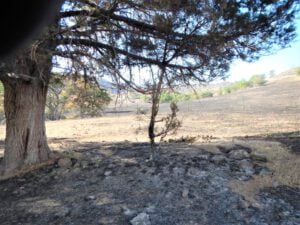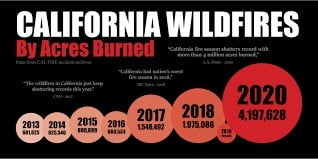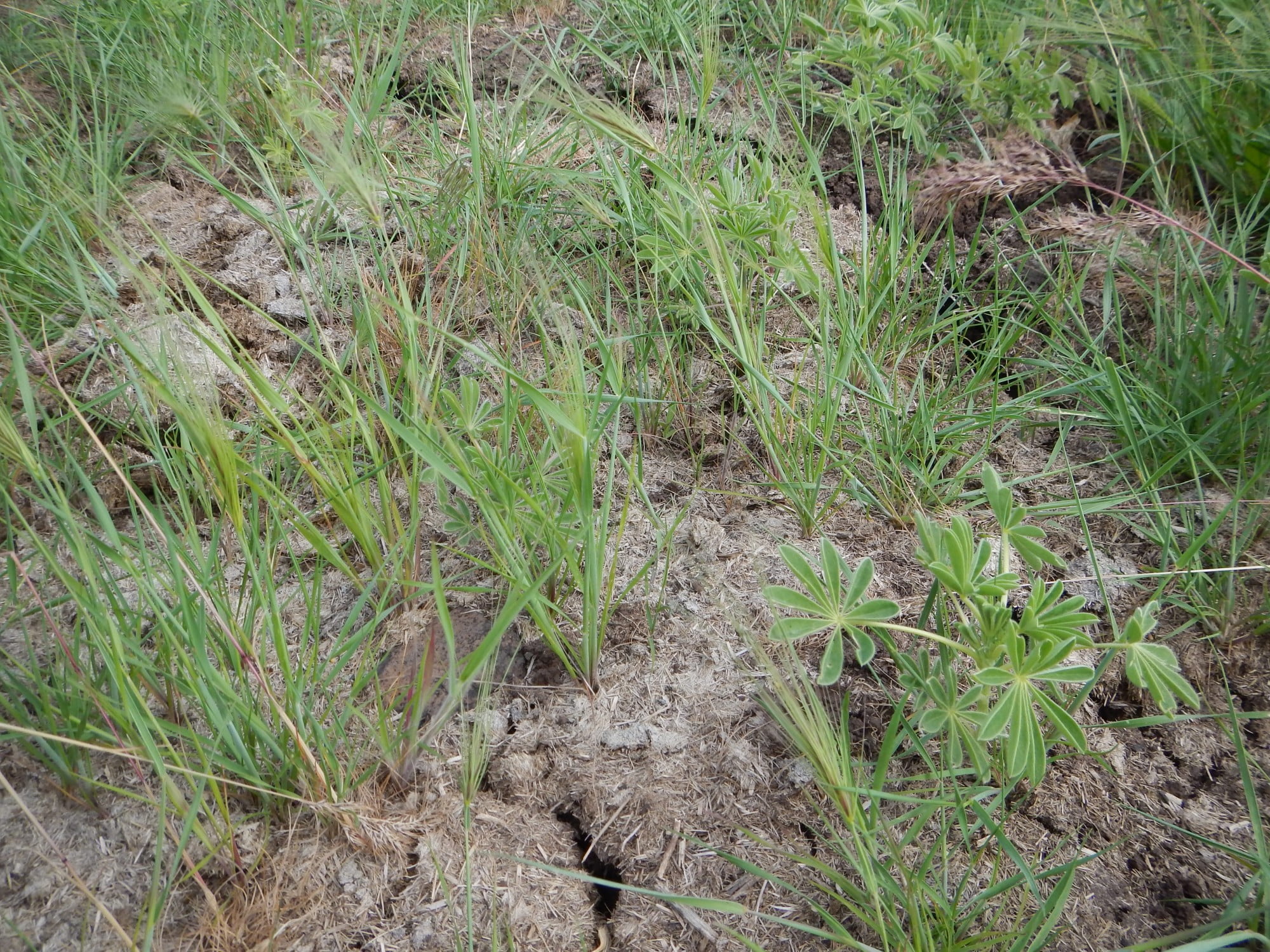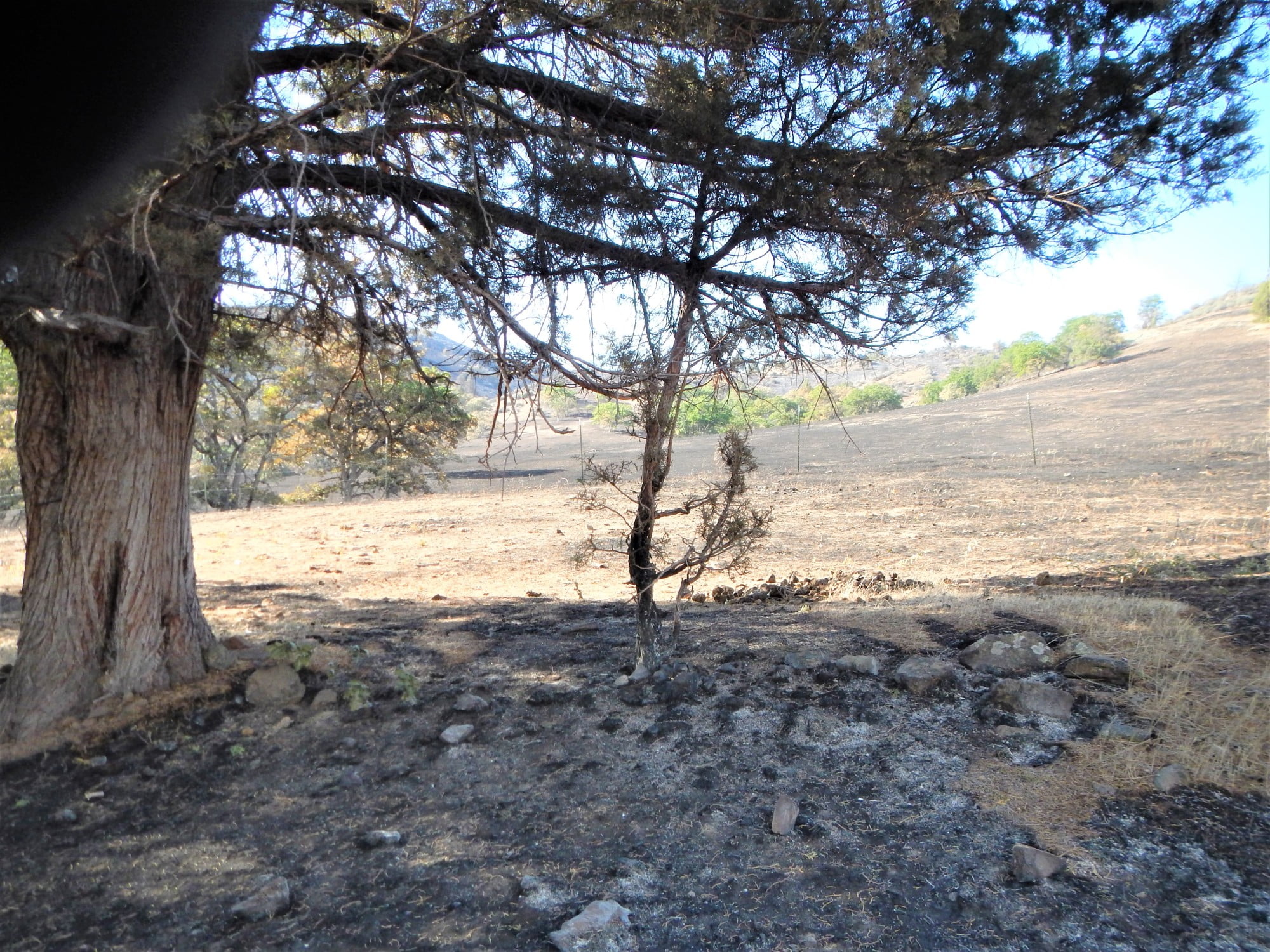By William E. Simpson II. Originally published at ValueWalk.

It’s the New Year (2022), but Sadly, we’re starting the year with a horrific mid-winter incinerating wildfire in Boulder County Colorado and that unfolding disaster.
[soros]
Q3 2021 hedge fund letters, conferences and more
Given this disaster and the suffering, is it reasonable to ask that you to take 10-minutes out of your day to understand what’s happened, and how you can help prevent future disasters like this?
I am not paid or motivated by money, I am motivated because I personally know their pain having suffered the loss of a human life due to wildfire.
And unlike so many people in the debate, I have studied the science of wildfire, and I have been on the fire-line in the front of the oncoming fiery dragon; I have looked into its eyes and breathed its breath.
“Those who cannot remember the past are condemned to repeat it.”– George Santayana
How quickly have the wind-whipped incinerating wildfires in California over the past 5-years slipped from memory?
The big question is: Has anyone learned anything yet?
Even with all the so-called expensive taxpayer-funded wildfire fuels reduction programs using prescribed burning, biomass processing, etc., both the frequency and intensity of wildfires in California and elsewhere have increased!
Year over year, we are having more fires with greater intensity and damage, not less!
Of course some legislators who can’t let-go of their failed posits regarding the existing fuels reduction programs will simply say; ‘We Need More Money”…
But more money and doubling down on what’s clearly not working is just insanity.
There are some people who will be made uncomfortable by this article, because they like the current paradigm of being paid for failure. And we can expect them to defend what has indeed failed.
We need a more comprehensive, effective, and naturally sustainable wildfire fuels reduction paradigm…
And as it so happens, we have a powerful unused tool sitting in the toolbox.
We need to reevaluate the existing, failed fuels reduction paradigm, which is costing taxpayers dearly in money, and via increasing losses from wildfire.
Some people are easily distracted and take their eye off the ball and striking-out, getting lost in all the rhetoric and misinformation, which in this case leads to costly disaster.
And some people, including some reporters and legislators/officials, who are poorly educated on all aspects of wildfire (including the chemistry of combustion), confuse others and the debate by talking about sources of ignition or types of fuel (types of grass or brush) or regions.
Catastrophic Wildfire Is A Fuels Problem At Its Core!
Leading published science shows that as a result of the collapse of our native species herbivory (animals that consume grass and brush) across much of the western U.S. landscape, an increase in both the intensity and frequency of wildfire is expected. [1]
The KEY: No fuel = No fire, regardless of winds or ignition source.
The existing fuels reductions programs of bio-massing and prescribed burns (and now, contaminating lands by putting chemical retardants on the landscape) are now empirically proven as flawed paradigms for the following reasons when applied to wilderness areas:
- Costs are very high for the amount of fuel removed; and
- Key ‘one-hour-class’ wildfire fuels (grass and brush) are annually recurring; and,
- Prescribed burns are costly, can turn into deadly wildfires, pasteurize/damage soils and soils biome, and also send carbon compounds into the atmosphere; and,
- Prescribed burns kill wildlife (further exacerbating the loss of herbivory) and leaves the landscape barren and subject to catastrophic erosion, which damages fisheries; and,
- Bio-mass processing is not practical on tens of millions of acres of remote designated wilderness that is at risk for wildfire, and where motorized vehicles and equipment are prohibited.
The key components to create fire. Without fuel, there cannot be fire! Wind = oxygen; heat = ignition; grass and brush = fuels.
Regardless of the type of flashy hot-burning fuel at hand, or where it is located, when it becomes excessive and dry, it’s prime for catastrophic wildfire.
Three key points:
- We CANNOT control sources of ignition, aka: ‘Heat’ (downed power lines, arson, chains dragging on roads, cigarettes, camp fires, etc.).
- We Cannot control the wind or the outside temperature.
- We CAN control fuels naturally using a symbiotic native species (wild horses) herbivory.
An Important Part Of The Solution: Reestablishing The Native Species Herbivory!
The photo (by William E. Simpson II) above shows native plants and grasses springing-forth from wild horse droppings. The unique digestive system of wild horses allows the seeds they eat to pass intact and able to germinate from the humus and micro-biome also contained in horse droppings. Ungulates (cattle – sheep) have complex stomachs and chew a cud, and they digest virtually all of the seeds of the native plants and grasses they eat. As such, protected wilderness areas with rare flora and dependent fauna should never be grazed by cattle or sheep, which results in the stripping-off of native flora.
*A native species American wild horse consumes about 5.5 tons of wildfire fuels (grass and brush) annually. And even as they graze, unlike ungulates (cattle & sheep), wild horses unique digestive system pass the seeds of native plants they eat back out onto the landscape, which is the result of a co-evolved symbiotic relationship between the grasses and plants and wild horses. The grasses and plants provide nutrition to the horse, and the horse benefits these grasses and plants by distributing their seeds intact back onto the ground!
*An average deer consumes about 1.3-tons of wildfire fuels each year.
The Hunting Industry Needs To Pay Attention Here!
According to a leading study, cattle have a 4% grazing overlap with deer! So they are using forage needed by deer. Wild horses only have a 1% grazing overlap with deer! [2]
We can, in an ecologically appropriate and cost effective manner, control wildfire fuels using large-bodied herbivores, especially non-ungulates (horses) that reseed native plants.
Three Step Solution in Critical Priority
- Rewilding native species American wild horses from taxpayer-funded ($100-M/year) off-range holding corrals and into selected wilderness areas that are unsuited to prescribed fire and/or bio-mass processing; and,
- Relocating wild horses from areas where they are in conflict with livestock production and other public lands uses (where such wild horses are subject to roundups and inappropriate chemical treatments) and placing them as family units into remote designated wilderness areas; and,
- Begin a 5-year moratorium on all hunting of cervids (deer and elk) in the western United States. This will help allow a come-back of native cervids that will assist with natural wildfire fuels reduction.
An Important, Yet Unused Tool
The plan known as: The Natural Wildfire Abatement and Forest Protection Plan (aka: Wild Horse Fire Brigade) provides an existing legal path to allow rewilding and relocation of wild horses (and burros) into designated wilderness areas that are both ecologically and economically appropriate. https://grazelife.com/blog/wild-horse-fire-brigade-lessons-in-rebalancing-north-american-ecosystems-by-rewilding-equids/
The Plan: This published article at the Sierra Nevada Ally highlights the issues around the currently flawed wild horse management, and importantly, includes a detailed synopsis of how a genuine sustainable solution for wildfires and wild horses can be implemented: https://www.sierranevadaally.org/2021/12/23/comsumerism-vs-wild-horses/
It’s a fact that we have a collapsed native species herbivory in the western United States.
The leading science informs us that native herbivores are very effective in the seamless sustainable wildland fuels management of grass and brush.
The Bureau of Land Management (BLM) under the Department of Interior is removing large native herbivores (wild horses) from many areas where their populations are indicated as extremely beneficial for wildfire protection and for preservation of forest ecosystems, wildlife, watersheds and fisheries. We desperately need augmentation (more horses, not less) in some areas in order to have a better distribution of wildfire fuel reduction results in the designated wilderness areas surrounding our rural towns and cities that stand in the path of wildfires that are coming from such areas.
The BLM (and the USFS) is using a one-size fit all wild horse management paradigm, which is ecologically and economically flawed.
Moreover, the entire BLM wild horse management paradigm is premised upon scientifically debunked myths.
Contrary to the BLM’s false proffering; all north American predators (bears, wolves, mountain lions and coyotes) are the co-evolved predators of wild horses; and, wild horses did not go extinct 12-14 thousand years ago during the last Ice Age.
In fact, new science proves that wild horses in North America lived after the Ice Age, just 5,000 years ago!
And, as science shows, the current wild horse management debacle results in the increase of both the frequency and intensity of wildfire.
As we have now seen (as I have written, time and time again) in Boulder County Colorado, wildfires can happen anytime of the year when the grass and brush ‘one-hour class’ fuels become excessive, which is a chronic situation in the western U.S. states given the collapse of our native herbivory populations of cervids (deer, elk, etc.).
If we focus on cost-effective Prevention via reestablishing our native herbivory, starting with a widespread deployment of the available wild horses into selected wilderness areas, sad tales like Boulder County Colorado can be reduced…
Boulder County Colorado Fire:
Plain Fact: Boulder County Colorado had too much flashy grass and brush fuels that were and ready for ANY source of ignition. The winds added abundant oxygen (like the old-school bellows on a blacksmith’s furnace) so the Boulder County wildfire burned extra fast and hot….
During the Klamathon Fire (2018) here in Siskiyou County California, we experienced a sample of what 30-40 mph winds and abundant grass and brush fuels could do… and it was costly!
We also saw first-hand how our local small herd of wild horses helped CAL-FIRE to stop that wildfire from getting into the uber-heavy fuels of the Cascade-Siskiyou National Monument and Soda Mountain Wilderness Area.
The juniper tree in the photo above was used for shelter by wild horses (note horse droppings). Flames from the Klamathon wildfire burned right under this tree, yet it survived having been made fire-resilient by the combined symbiotic actions of wild horses, allowing this tree to survive where other nearby trees that were not used by wild horses became matchsticks!
Trees that were being used by wild horses as shelters had the fuels (grass and brush) under their canopies grazed-down so flame heights under trees were greatly reduced. And these large-bodied herbivores (wild horses) scratch themselves using the lower dead branches on these trees (aka: fire-ladders), breaking them off. The aggregate result of this symbiotic behavior (tree provides shelter, horses provide fertilizer and fuels reduction making trees fire resilient) saves trees, and shows how wild horses are the protectors of forests and wildlife.
There is no doubt that the local wild horses helped to save the precious Soda Mountain Wilderness Area from the deadly Klamathon Fire of 2018.
Like some many other western state localities, Siskiyou County California experiences winds into the 60-70 mph range several times a year, so it’s only a matter of time until we get what I am now going to call the ‘Boulder Effect‘; high winds + abundant flashy fuels = catastrophic wildfire.
References:
- Collapse of the world’s largest herbivores: “By altering the quantity and distribution of fuel supplies, large herbivores can shape the frequency, intensity, and spatial distribution of fires across a landscape”. William J. Ripple1, Thomas M. Newsome1,2,Christopher Wolf1, Rodolfo Dirzo3, Kristoffer T. Everatt4, Mauro Galetti5, Matt W. Hayward4,6, Graham I. H. Kerley4, Taal Levi7, Peter A. Lindsey8,9, David W. Macdonald10, Yadvinder Malhi11, Luke E. Painter7, Christopher J. Sandom10, John Terborgh12 and Blaire Van Valkenburgh13http://advances.sciencemag.org/content/1/4/e1400103.full
Rewilding: Jozef Keulartz. “The removal of large herbivores has adverse effects on landscape structure and ecosystem functioning. In wetter ecosystems, the loss of large herbivores is associated with an increased abundance of woody plants and the development of a closed-canopy vegetation. In drier ecosystems, reductions of large grazers can lead to a high grass biomass, and thus, to an increase in the frequency and intensity of wildfires. Together, with the loss of a prey base for large carnivores, these changes in vegetation structures and fire regimes may trigger cascades of extinctions (Bakker et al., 2016; Estes et al., 2011; Hopcraft, Olff, & Sinclair, 2009; Malhi et al., 2016).” http://oxfordre.com/environmentalscience/view/10.1093/acrefore/9780199389414.001.0001/acrefore-9780199389414-e-545
- Foods of wild horses, deer, and cattle in the Douglas Mountain area, Colorado.Hansen, R. M., Clark, R. C., & Lawhorn, W. (1977). Journal of Range Management, 30(2), 116-118. https://repository.arizona.edu/handle/10150/646893
- Influence of ruminant digestive processes on germination of ingested seeds; https://ir.library.oregonstate.edu/concern/graduate_thesis_or_dissertations/v405sg230
Ruminant Digestion: https://www.mun.ca/biology/scarr/Ruminant_Digestion.html
https://www.thesprucepets.com/horse-manure-facts-1887394
About the Author
William E. Simpson II is an ethologist living among and studying free-roaming native species American wild horses. William is the award-winning producer of the micro-documentary film ‘Wild Horses‘. He is the author of a new Study about the behavioral ecology of wild horses, two published books and more than 150 published articles on subjects related to wild horses, wildlife, wildfire, and public land (forest) management. He has appeared on NBC NEWS, ABC NEWS, theDoveTV and has been a guest on numerous talk radio shows including the Lars Larson Show, the Bill Meyer Show, and on NPR Jefferson Public Radio.
Check out William’s Film Freeway account for films, studies, TV & radio interviews, and more HERE: https://filmfreeway.com/WilliamESimpsonII
Updated on
Sign up for ValueWalk’s free newsletter here.






